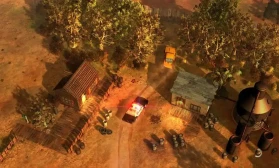In the fast-paced universe of video game journalism, readers often see only the final product: the polished article, the exclusive reveal, the developer quote that sets forums ablaze. But behind every piece of deep game news lies a meticulous, often grueling, process of securing and conducting interviews. This is the hidden engine of games journalism, a world of relationship-building, precise preparation, and strategic negotiation that few outside the industry truly understand.
The Foundation: Building Trust and Access
Long before a single question is drafted, the process begins with access. For journalists at outlets like Kotaku, IGN, Game Informer, or smaller niche blogs, their most valuable currency is not their writing skill but their credibility. Building a relationship with game developers, public relations (PR) managers, and studio heads is a slow and deliberate investment.
This involves years of accurate reporting, respecting embargoes, and crafting stories that are fair even when they are critical. A PR representative at a major publisher will only grant a coveted interview with a creative director for their next AAA title to a journalist they trust not to misrepresent their words or leak spoilers. This trust is the gatekeeper to the entire process. It’s a symbiotic relationship; journalists need access for compelling content, and studios need media to generate informed hype for their games.
The Pitch and The Negotiation
Once a major game is announced or a studio begins its marketing cycle, the dance begins. The journalist or their editor must pitch for access. This isn’t simply sending an email asking for an interview. It’s a formal proposal outlining the outlet’s reach, the intended angle of the story, and the specific individuals they wish to speak with.
The negotiation that follows is a complex tug-of-war. The development studio, guided by its PR team, has clear goals: control the narrative, highlight specific features, and avoid certain topics—be it crunch, development troubles, or a controversial monetization strategy. They will often set strict conditions: the interview can only cover a specific segment of the game, the duration is limited, and a PR minder will be present to steer the conversation if it veers into forbidden territory.
The journalist’s goal is to push back just enough to secure meaningful, new information without burning a bridge. They might negotiate for more time, argue for a different interviewee, or successfully lobby to have certain off-limit topics included. This delicate balance is where experienced reporters truly earn their keep.
The Art of Preparation: Beyond the Basic Questions
With access granted, the real work starts: preparation. An interview with a developer like Hideo Kojima or Sam Lake is not something a journalist wings. It involves deep, immersive research.
A prepared journalist will have:

- Played every previous game in the franchise or by the developer, noting mechanics and narrative themes.
- Scoured every existing interview to avoid asking repetitive questions.
- Analyzed the announced game’s trailer, demo, or preview build frame-by-frame.
- Prepared a list of dozens of questions, structured from broad to specific.
The questions are designed to do more than just get a soundbite. They are crafted to unlock stories, to get the developer to reveal their creative process, their technical challenges, and their personal connection to the work. Instead of "What inspired this game?" a better question might be, "I noticed a visual motif in the demo that echoes a scene from your previous title, X. Is this a continuation of that theme, and what does it represent for the protagonist's journey?"
The Dance of the Interview Itself
The interview, whether in-person, over Zoom, or via email, is a performance with two actors following different scripts. The journalist aims to create a natural, conversational flow, building rapport to get the subject to open up and perhaps reveal something unexpected. They must listen intently, ready to abandon their prepared list to follow a fascinating tangent.
Meanwhile, the developer (and the ever-present PR minder) is trained to deliver key messages. They will expertly pivot from a tricky question back to a talking point about the game’s innovative new engine or emotional story.
The journalist’s skill is tested in navigating these pivots, rephrasing questions, and gently pressing for a clearer answer without making the subject defensive. The most revealing moments often come in the last 30 seconds, after the official "thank you," when the recorder might be off and guards come down—a phenomenon journalists call the "golden minute."
Synthesis and The Ethical Finish Line
After the interview, the journalist is left with hours of audio or pages of text. The next step is synthesis: transcribing, identifying the most compelling quotes, and weaving them into a narrative that is both informative and engaging. This is where the story takes shape.
Crucially, this stage involves a standard practice: the copy approval process. Almost universally, journalists will send the direct quotes they plan to use back to the PR team for fact-checking. This is not for approval of the article’s tone or content, but to ensure that technical details are correct and that the developer’s words were transcribed accurately. It’s a vital ethical step to maintain integrity and avoid misrepresentation.
Finally, the article is published. The exclusive quote spreads across the internet, and readers engage with the news. They see the result but rarely appreciate the months of relationship management, the days of intense research, the hours of negotiation, and the subtle psychological dance of the interview itself that made it all possible. The process behind deep game news is, itself, a deeply human game of strategy, patience, and respect.













